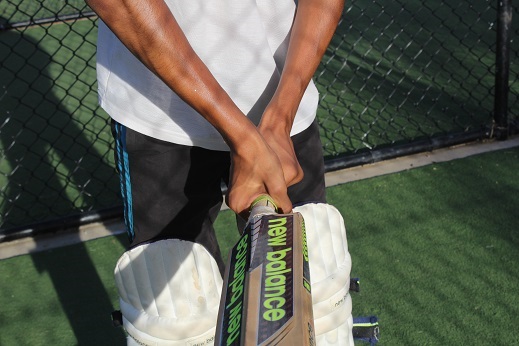The Grip

An incorrect grip can prevent a batsman from being able to hit to certain sides of the ground, and have less control of the trajectory of the ball. The standard, recommended grip to allow 360 degree strokeplay and effective shot-execution is one where the top and bottom hand are aligned down the spine of the bat. This grip is formed by placing the V between the thumb and index finger of both hands straight down, or slightly to the left of the spine of the bat. The top-hand should hold the bat firmly and essentially steer/lead the bat. The bottom-hand is the power hand however, it is standard to grip the bat slightly looser/softer than the top-hand. The natural way to achieve this grip is to place the bat face-down against the floor and then pick it up. Your hands should naturally wrap around the handle in your ideal and comfortable grip position.
/*The Stance
A batsman's stance is their base to react to all deliveries and play all shots. Therefore, it must be comfortable, balanced and allow nimble footwork. The feet should be roughly shoulder width apart (though this can be changed as the batsman develops) with knees bent slightly. The chin should be over the toes to maintain the centre of gravity and the head balanced. The eyes need to be level to allow them to track and respond to the line and length of the ball earlier. The toes and hips should line up back towards the bowler putting the batsman into a side-on position.
The Backlift
A sound backlift allows power through the downswing and control of the lateness of the shot. The bat is lifted while the batsman moves towards the ball and then driven down to hit the ball. The backlift comes naturally to most players however, there are dangers to look out for. The toe of the bat when lifted cannot be angled to fine-leg. This will require the bat coming around the body to hit the ball meaning that the batsman only has access to the leg-side.
*/